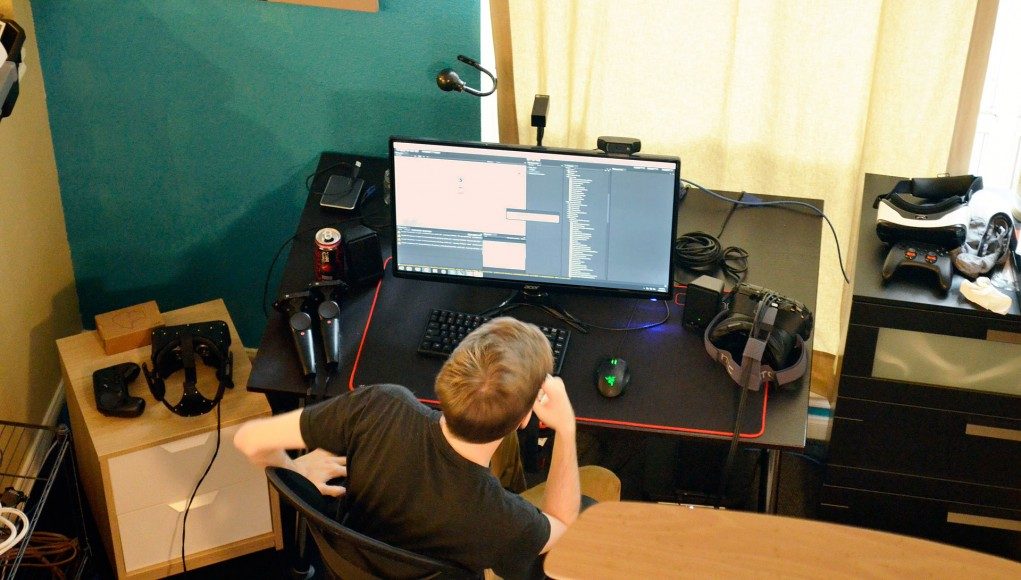If you are part of a virtual reality startup, are you ready to survive the next 18 months?
VR startups are all too aware they face a tricky route to success over the short run. We all know that VR setups are going to be expensive and it will be difficult to convince the average person to jump in early and spend over $1,000 on a home set-up. We’re all excited about the virtual reality future, but the real life present is that there’s a time gap between now and when VR has fully arrived in our homes and everyone is a customer.
 Guest Article by Ben Smith:
Guest Article by Ben Smith:
Ben is a Venture Partner at Winnick and Company based in Los Angeles. Ben was an early Google and YouTube exec, and has founded and led multiple venture backed video startups. His monthly profiles on “why people are great at what they do” are found here.
If you are a VR startup and on the clock to deliver results, raise money, and stay afloat, you can’t afford to wait a couple of years without a solid roadmap. You can’t even afford to wait a couple of months. The time for answers and a credible plan is now. The clock is running.
Here are 5 key strategies VR startups can use to survive over the next 18 months and beyond.
1. Figure out the Stakes
- Users (or revenue)
- Use-cases
- Data
When new industries emerge, a race usually breaks out to capture as many users as possible, or in other words, execute on the “ol’ landgrab”. It’s indeed smart to go after as many users as possible, but remember what exactly you are actually trying to achieve out there. You need to find real use-cases for your product or service that will address true market needs. The faster you are locked into what your users desire, the faster your company can focus on delivering specifically for that user need.

Let’s face it: if only enthusiast have VR at home for the next 18 months, your user numbers will not look like early Snapchat in even a best case scenario. In the absence of early Snapchat growth and user numbers, VR startups need to be meticulous about building data sets that get them closer to understanding the habits and needs of the userbase.
I get it. This is really easy to talk about, but much harder to actually do. I’m involved in VR everyday, and I have no clue what VR users actually desire and need right now. It’s not good enough to guess—that’s for wantrepreneurs—you need to go out and find the one or two metrics that will fuel your startup toward success.
2. Build Your Base and Moat
It’s all well and good to be collecting users and viewers, but a key question is how you are locking them into your product? What makes users stay with you instead of switching to others?

This is a vital question to investors. If you are currently raising money in the VR industry, you need to address why investors should invest NOW instead of waiting for 18 months down the road when the market is actually here. If I’m personally investing in your startup, I want to know we’re building something today that makes it harder or impossible for others to duplicate in the future.
The best VR startups are thinking about user activity and network effect that grows upon itself. If you are connecting users to other users, or locking in a particular type of activity, you are much further ahead of the game than the vast majority of other VR startups.
3. Use VR’s Natural Strengths
Submit to the zen. In the early days of any technology, differences appear to be weaknesses until they become strengths. In other words, stop emulating old platforms, and figure out what in VR gives you an unique advantage.
When I was at YouTube in the early days, we struggled as a company because we strained to be a new version of television. It was only when we embraced the odd unique things about the video platform that were working for us that we took off from a business perspective. We stopped being a copy of television, and instead became our very own thing.

The magic of Virtual Reality is there will be a million different ways we will do things we can’t imagine today. The best VR startups will deliberately focus on these items from the beginning, even if it looks a little different or odd today. Take a look at AltSpaceVR experimenting with social VR. This is a company that is very deliberate about learning what is possible in social VR. You better believe they will figure out what they do that nobody else can before others. And it’s no accident they have some of the best investors around, including Google Ventures.
4. Beware of stunt-customers.
In early markets, high profile brands come knocking on your door to be one-off customers. Yet having these brands as customers can often come at a steep price. For example, Jimmy Fallon calls you and wants to build the coolest, best Jimmy Fallon VR experience ever using your platform! Do you pull the trigger on the deal? You might find yourself essentially becoming a VR agency for Jimmy Fallon for months, completely forgetting about your own primary goals (see #1 above). Sometimes these deals are worth it, and sometimes they are a huge resource drain. It’s vital to clearly identify how a Jimmy Fallon deal furthers your primary goals so you can quickly decide if the deal is truly advantageous for you.
5. Learn how to measure
The best startups know how to measure progress on a weekly basis. You need to know where you stand on any given day or in any given week. It’s important to understand if you are getting to where you want to go. The weakest startups have loose metrics (see #1) and then end up having a difficult time getting where they want to go.
Don’t let this be you. Start 18 months from today and figure out the precise metrics you will need to be judged successful. Now work backward. Figure out where that outs you today, and you now have the roadmap right in front of you. You know the metrics, the pace, the direction, and you are able to measure all along the way.
In conclusion, the best startups I see know how to build natural business models directly into the roadmap. They understand the key metrics that drive that business and provide a moat. They don’t lose sight of their goals with sexy one-off customers. And they know where they are and where it’s all going.
When you’re executing on all of these cylinders, VR businesses are in charge of their own destiny, and can withstand the early customer install challenges that await VR startups today.







